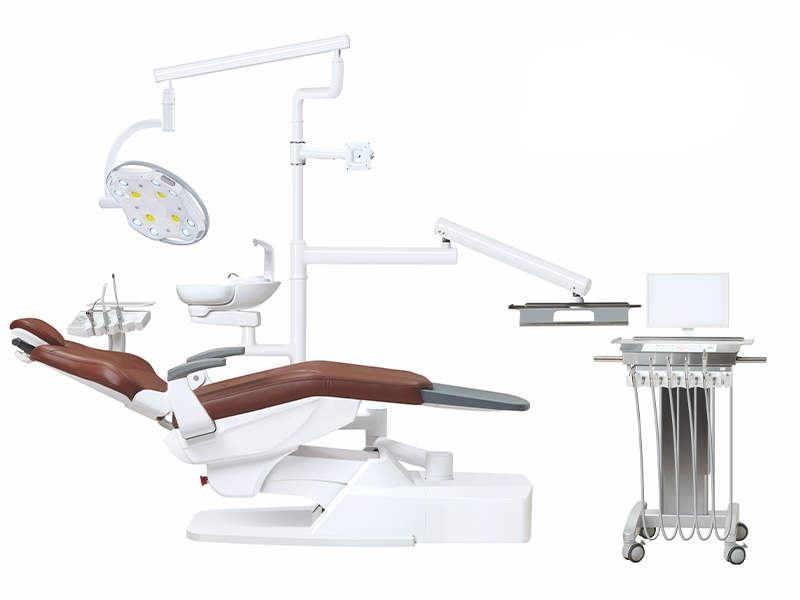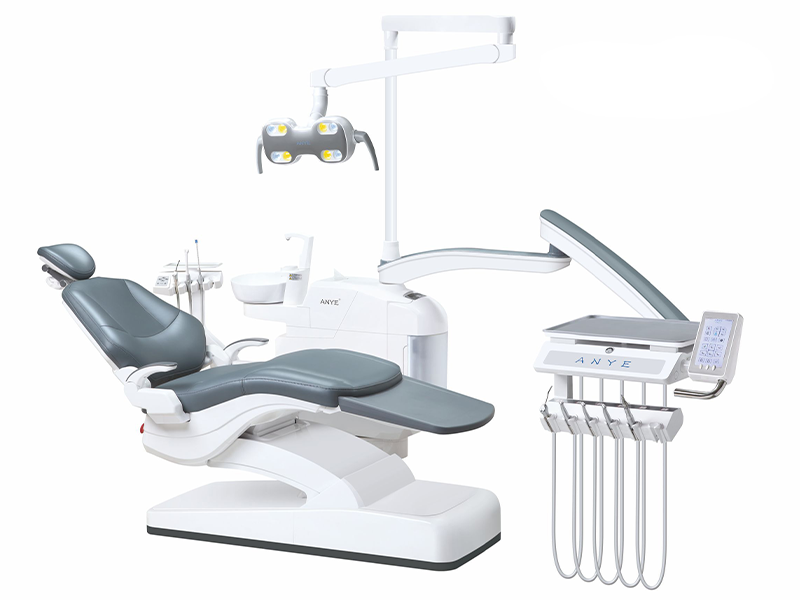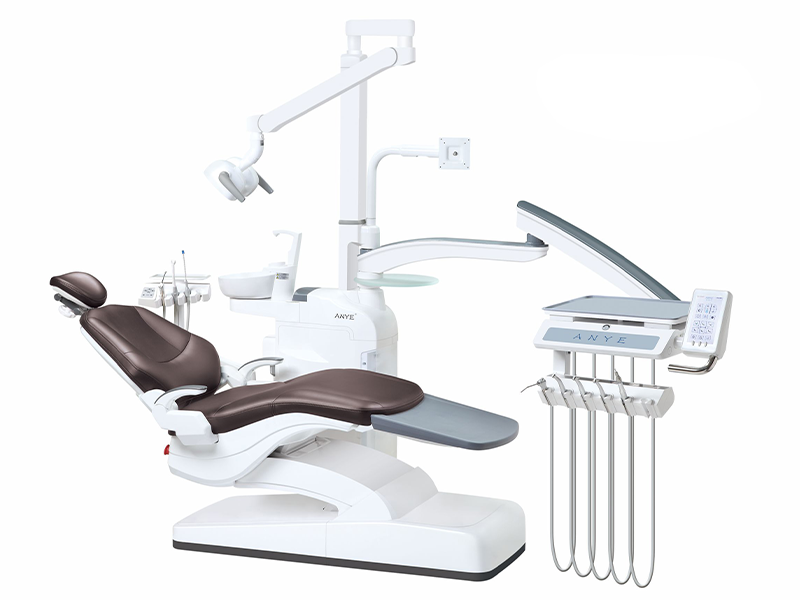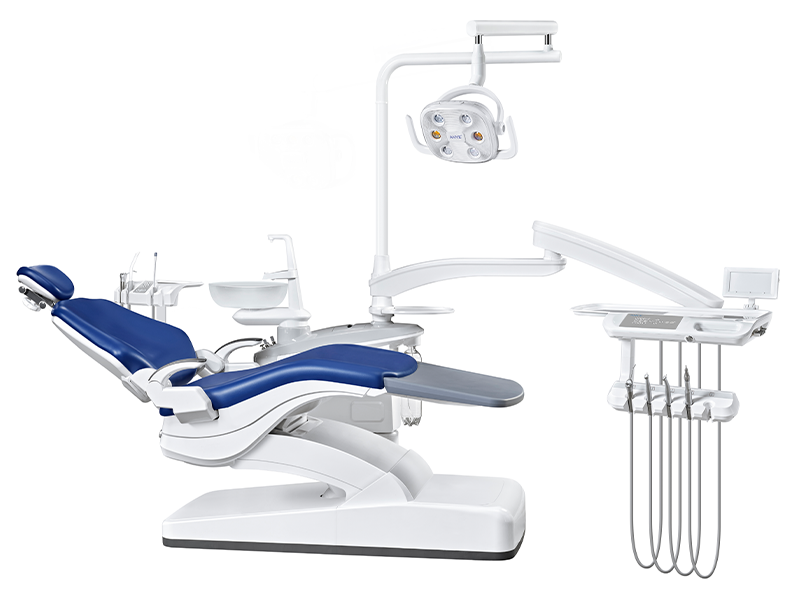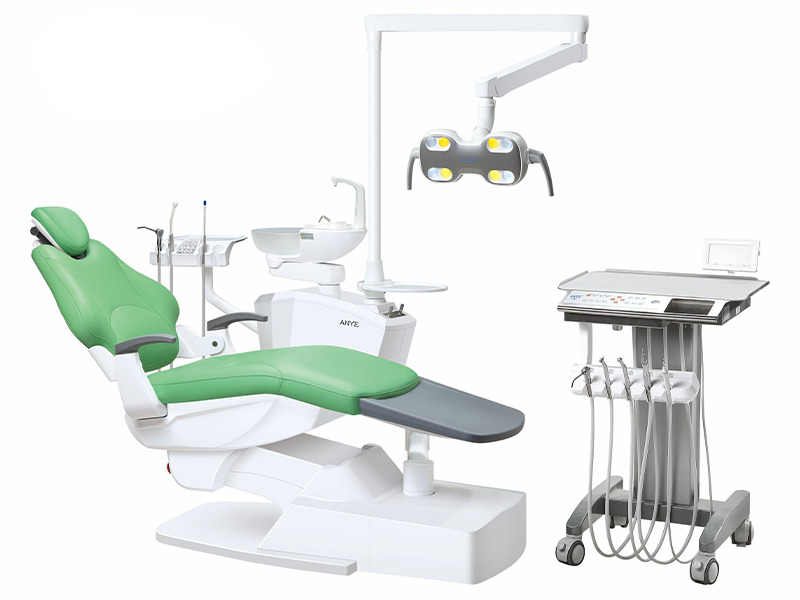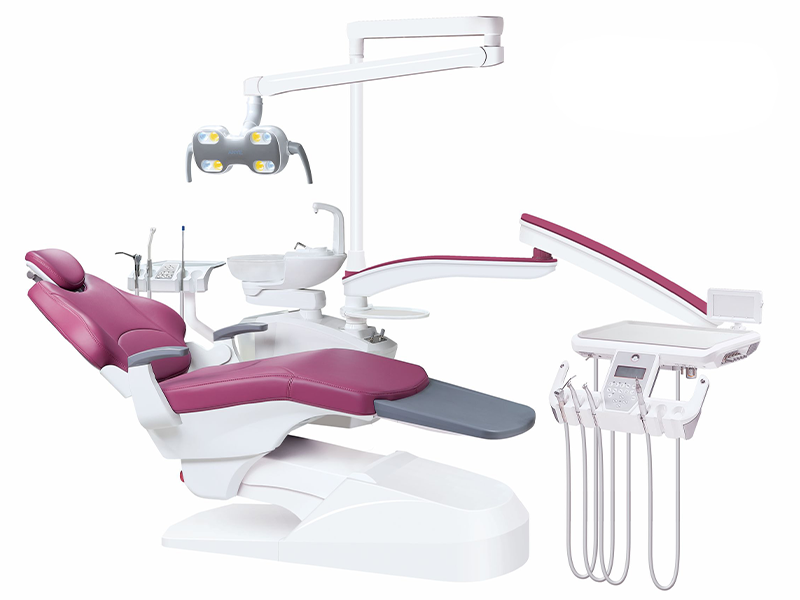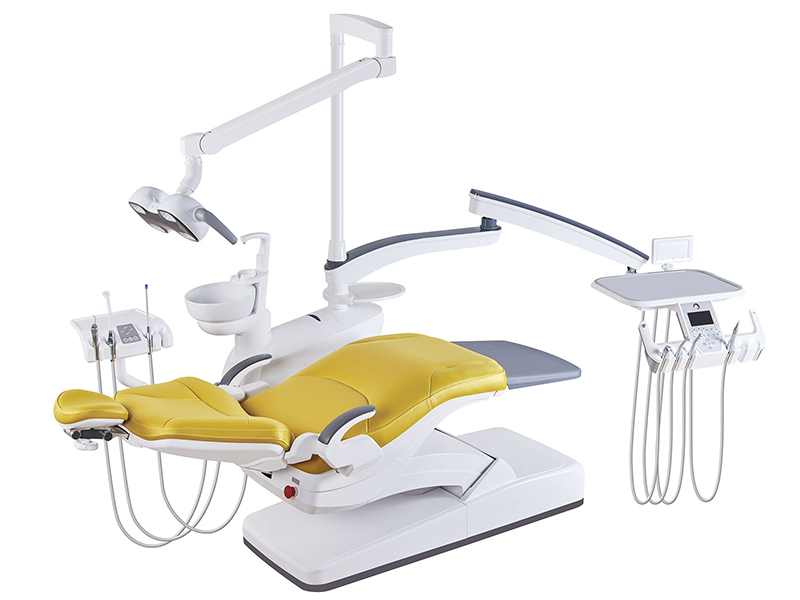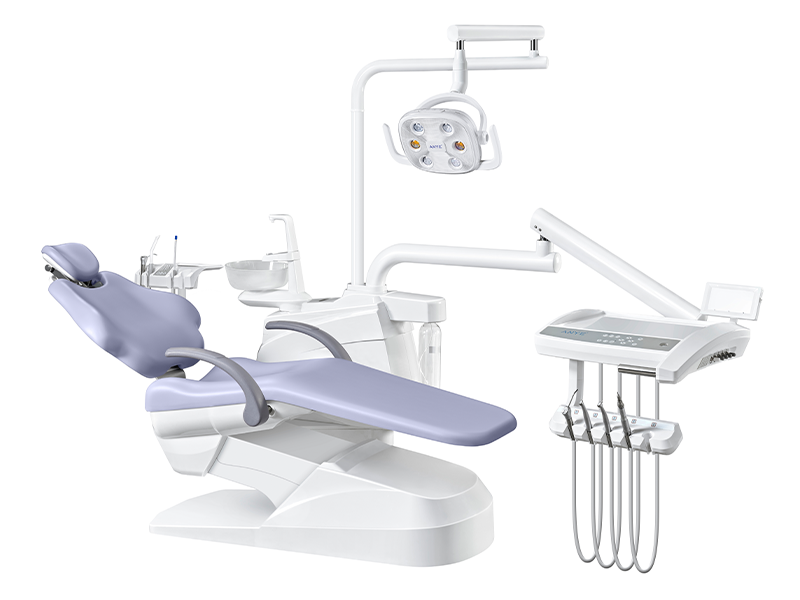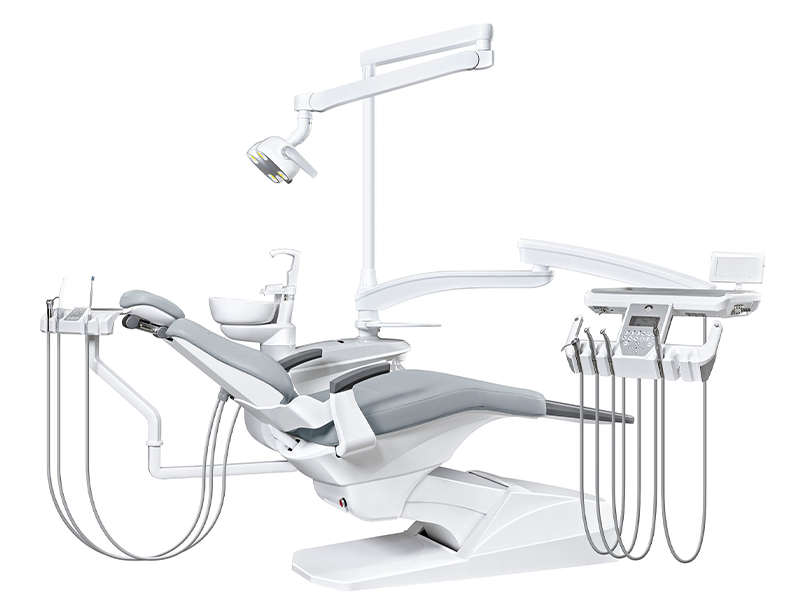Choosing between hydraulic and electric dental chair systems represents a critical investment decision that directly impacts clinical workflow efficiency, patient comfort, and treatment precision. Dental chairs serve as the operational centerpiece of modern practices, supporting loads of up to 450 lbs while enabling practitioners to achieve positioning accuracy within millimeters for complex procedures. The evolution from basic mechanical chairs to today's sophisticated treatment centers has revolutionized how dental professionals deliver care across general and specialty practices.
Anye Dental brings over 25 years of hands-on manufacturing expertise and clinical implementation experience to this comparison. As a global leader serving dental professionals in 60+ countries with ISO13485 and CE-certified equipment, we've gathered insights from thousands of practitioners using both hydraulic and electric systems daily. This comprehensive guide examines the technical specifications, performance metrics, and clinical applications of each technology, helping dental procurement specialists make data-driven decisions based on their specific practice requirements, patient demographics, and budgetary considerations.
How Hydraulic and Electric Dental Chair Systems Work
Hydraulic Dental Chair Mechanisms
Hydraulic dental chairs operate on Pascal's Principle, where pressure applied to a confined fluid is transmitted equally in all directions. This physical principle enables smooth, controlled movements essential for patient positioning. The system consists of several key components working in harmony:
- Hydraulic Pump: A motor-driven pump that pressurizes fluid, converting mechanical energy into hydraulic power
- Actuators: Cylinders that transform the hydraulic fluid's energy into linear or rotational motion
- Control Valves: Mechanisms that regulate fluid flow, controlling movement speed and direction
According to research from Anye Dental's engineering team, hydraulic systems can maintain stable pressure levels between 2,400-2,500 PSI for optimal functionality, ensuring reliable performance even under varying loads.
Electric Dental Chair Mechanisms

Electric dental chairs utilize precision motors and electronic control systems to achieve position adjustments. These chairs feature:
- Electric Motors: Drive the chair's movement with direct mechanical force
- Electronic Control Systems: Process input from touchpads or foot pedals to coordinate motor actions
- Programmable Memory Settings: Store preferred positions for various procedures
The electronic architecture allows for millimeter-precise adjustments, with some advanced models achieving positioning accuracy within 0.5mm. This precision makes electric chairs particularly suitable for specialized procedures requiring exact patient positioning.
Comparative Analysis: Hydraulic vs. Electric Systems
When evaluating dental chair systems, several key performance metrics help determine which technology better suits your practice's needs:
| Feature | Hydraulic Chairs | Electric Chairs |
| Noise Levels | Moderate (55鈥65 dB) | Near-silent (<40 dB) |
| Precision | Basic adjustments | High precision, customizable |
| Energy Consumption | Continuous energy use | Energy-efficient (only active use) |
| Weight Capacity | Higher (typically 450+ lbs) | Moderate (varies by model) |
| Maintenance | Regular hydraulic checks | Occasional motor/software updates |
| Initial Cost | Higher upfront investment | Generally more affordable |
| Installation | Complex (requires plumbing) | Simpler (electrical rewiring) |
Noise and Comfort Considerations
Patient comfort significantly impacts treatment acceptance and anxiety levels. Hydraulic systems typically operate at noise levels between 55-65 dB, while advanced electric systems can function below 40 dB. This noise difference can be particularly important for patients with dental anxiety or during longer procedures.
Anye Dental's AY-215 Series incorporates noise-reduction technology in both hydraulic and electric models, with the AY-215B Series featuring sub-25 decibel operation levels for a quieter, more serene treatment environment.
Energy Efficiency and Operational Costs
Electric dental chairs typically demonstrate superior energy efficiency since they only consume power during active movement. In contrast, hydraulic systems maintain constant energy use, though at a stable rate. According to efficiency studies, electric systems can reduce energy consumption by up to 40% compared to traditional hydraulic models.
Anye Dental's EcoDrive™ hydraulic systems address this difference by incorporating innovative energy recovery capabilities, recycling kinetic energy during chair movements to reduce power consumption by up to 18%.
Suitability for Different Clinical Needs
Hydraulic Chairs: Ideal Applications
Hydraulic dental chairs excel in specific clinical scenarios:
- General dentistry practices performing routine procedures like cleanings, fillings, and exams
- Clinics treating patients of varying sizes, including bariatric patients, due to superior weight capacity
- Practices prioritizing mechanical reliability with fewer electronic components
- Settings where simplified controls are preferred for ease of operation
For practices seeking reliability under varying conditions, Anye's AY-215A Series hydraulic models offer exceptional stability, supporting patients up to 450 lbs while maintaining precise positioning during treatments.
Electric Chairs: Optimal Use Cases
Electric dental chair systems typically perform best in these scenarios:
- Specialty practices requiring precise, repeatable positioning (endodontics, implantology)
- High-volume practices benefiting from programmable memory positions for efficiency
- Modern clinics integrating digital workflows and chairside technologies
- Practices prioritizing energy efficiency and reduced operational costs
Anye Dental's AY-215C5 implant-focused electric chair features a 12-axis positioning system providing surgeons with millimeter-level precision during guided bone regeneration and other complex procedures.
Installation and Maintenance Considerations
Installation Complexity Comparison
Installation requirements differ significantly between these systems. Electric dental chairs generally require simpler installation, typically involving standard electrical wiring that can be completed within a day by qualified professionals. Conversely, hydraulic systems demand more complex setup, including plumbing, pumps, and filters integration.
For practices concerned about installation logistics, Anye Dental offers comprehensive installation support services, including site assessment, delivery coordination, and professional setup by certified technicians.
Long-Term Maintenance Requirements
Maintenance needs represent a crucial factor in total ownership costs. Hydraulic systems typically feature:
- Regular fluid analysis (recommended annually)
- Biannual pressure tests to verify seal integrity
- Scheduled fluid replacement every 1-2 years to prevent contaminant buildup
Electric systems generally require: - Electronic diagnostics to verify system functionality - Motor and actuator inspections to ensure smooth operation - Software updates when available for improved performance
Anye Dental's iCare 4.0 Platform uses machine learning to analyze usage patterns from over 60,000 connected chairs globally, identifying pre-failure indicators like hydraulic pressure deviations and motor temperature fluctuations. Clinics using this system report a 92% reduction in catastrophic failures, with predictive alerts enabling 94% of repairs to occur during non-operational hours.
Anye Dental's Advanced Chair Solutions
Innovative Technologies in Anye Dental Chairs
Anye Dental has established itself as a leader in dental equipment manufacturing, operating a 15,000+ sqm production facility equipped with cutting-edge technology including Kuka robotic arms and laser-cutting systems. This advanced manufacturing capability enables precision engineering across their product lines.
The company's dental chairs incorporate several innovative features:
- AI-assisted posture adjustment algorithms that analyze patient body metrics in real-time
- UV-C sterilization tunnels within waterlines achieving 99.99% pathogen reduction
- EcoDrive™ hydraulic systems reducing energy consumption by 40% compared to traditional models
- Modular design with 85% component commonality across models, simplifying maintenance and parts management
Specialized Chair Series for Every Practice Need
Anye Dental offers a comprehensive range of chair models designed for specific clinical applications:
- AY-215A Series (A1, A2, A3, A5): Advanced models for general dentistry with ergonomic features for long procedures
- AY-215B Series (B1, B2, B3, B5): Featuring the specialized B5 sterilization model with built-in infection control systems
- AY-215C Series (C1, C2, C3, C5): The C5 model incorporates specialized features for implant procedures with enhanced stability
- AY-215D Series (D2, D3): Pediatric-focused chairs combining antimicrobial upholstery with distraction technology
- AY-215E Series (E1): Rehabilitation model featuring motorized lateral tilt and 360° rotating seat base for patients with mobility challenges
For specialized procedures, the AY-215C5 Implant Dental Unit combines precision positioning with advanced functionality, making it ideal for complex surgical interventions.
Making the Right Choice for Your Practice
Total Cost of Ownership Analysis
When evaluating dental chair options, consider the five-year operational costs, which typically represent 300%–400% of the initial purchase price according to industry analysis. Key factors include:
- Energy consumption: Electric chairs generally offer long-term savings
- Maintenance requirements: Hydraulic systems may require more frequent service
- Downtime costs: Advanced diagnostic features can minimize unexpected disruptions
- Upgrade potential: Consider whether the system can adapt to evolving technology
Key Questions to Ask Before Purchasing
Before investing in a dental chair system, consider these critical questions:
- What types of procedures will primarily be performed? Complex procedures may benefit from electric precision.
- What is the typical patient demographic? Practices treating heavier patients might prefer hydraulic stability.
- How important is noise reduction in your clinical environment? Electric chairs typically operate more quietly.
- What are your installation constraints? Limited plumbing access may favor electric systems.
- What is your maintenance infrastructure? Consider access to qualified service technicians.
For a personalized assessment of which chair system best matches your practice needs, explore Anye Dental's guide to choosing the right dental chair.
Future Trends in Dental Chair Technology
The dental chair market continues to evolve rapidly, with innovative technologies reshaping practice capabilities and patient experiences. Current market analysis projects 5.9% CAGR growth through 2030, with several transformative trends emerging:
AI-integrated positioning systems now offer automatic adjustment capabilities responsive to patient biometrics and procedure types, reducing positioning time by up to 45% while improving ergonomic outcomes for practitioners. Leading systems can maintain positions with ±0.3mm precision throughout complex procedures.
IoT connectivity and predictive maintenance capabilities allow practice managers to monitor chair performance metrics, with advanced analytics detecting potential issues before failure occurs. Connected chairs demonstrate 92% reduced downtime compared to traditional models.
Sustainability innovations are advancing rapidly, with newer electric models reducing energy consumption by up to 40% compared to previous generations, while eco-conscious manufacturing processes have decreased the carbon footprint of production by 32% since 2020.
Hybrid hydraulic-electric systems combine the 450+ lb weight capacity and reliability of hydraulic foundations with the precision control of electric components, offering a compelling solution for multi-specialty practices.
Anye Dental's Research & Development center continues pioneering these advancements, with our 15,000+ sqm manufacturing facility utilizing Kuka robotic precision engineering to develop next-generation dental chair systems. Contact our technical consultants to discuss which current technology best aligns with your practice needs while positioning you for seamless integration with future innovations.


